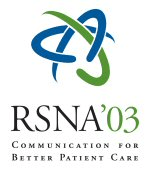Abstract:Purpose/Objective: To evaluate the patterns of failure and toxicity of Hyperfractionated Radiation Therapy (HFX-RT) and concurrent High-dose Intraarterial cisplatin (IACDDP) for patients with advanced (large volume) squamous cell carcinoma of the head and neck (SCCHN). Materials/Methods: Fifty-three patients with locally advanced primary SCCHN were treated on institutional IRB approved protocol with HFX-RT and limited high-dose IA cisplatin, (150mg/m2), given concurrent with the boost phase of radiation therapy at the beginning of the sixth week of therapy. Enrollment was limited to patients with 1993/1998 American Joint Committee on Cancer stage III or IV disease. Three of fifty-three patients ( 5.7%) had stage III and 50 of 53, (94.3%) had stage IV disease.All patients received HFX-RT 5 days per week in twice daily fractions of 1.2 Gy separated by 6 hours in two major phases. The initial phase involved comprehensive lateral large-field RT portals to treat all areas of gross disease, (primary and nodal) and areas at risk for subclinical extension (eg, uninvolved upper neck) with a cumulative dose 60 Gy in 5 weeks. RT to clinically uninvolved low neck was delivered using once a day fraction of 2 Gy per fraction to a cumulative dose of 50 Gy via a matching anterior portal. Boost phase included reduced portals, to encompass the primary tumor and all gross nodal disease with a maximum 1.5 to 2cm margin to a cumulative dose of 72 Gy. IACDDP delivery coincided with initiation of boost RT.Systemmic effects of cisplatinum were neutralized by concurrent intravenous adminstarion of sodium thiosulfate. A final portal reduction was undertaken in week 7 to gross tumor with a maximum of 1 to 1.5cm margin to a cumulative dose of 76.8 to 81.6 Gy. Results: With a median follow-up of 3 years, 20 patients are alive without disease, 21 have died of disease, and 11 have died of causes other than tumor. The status of 1 patient is unknown. The overall local regional control rate is 76% . The control at the primary site is 74% and in the neck 87%.The distant control rate is 69%. Three year disease free survival and overall survival is 61% and 45% respectively. Incidence of mucositis grade 3 or greater acute toxicity (NCI-CGCT/RTOG) is 79%. There are no regional failures in the uninvolved neck. The incidence of distant metatastasis is 31%. There is no garde 3 or more systemmic toxicity . Conclusions: 1) In patients with unfavorable bulky SCCHN, Hyperfractionated Radiation and limited IACDDP provides excellent 3-year survival and local control with decreased systemic toxicity as compared to other regimens utilizing high dose chemotherapy 2) Limited IACDDP (one/two) injection results in locoregional control rates that are equivalent to those using Radiation Therapy with multiple intraarterial injections or concurrent multi-drug intravenous chemotherapy. 3) As seen in previous studies of concurrent chemotherapy and radiation, we note a reversal in the historical patterns of failure (distant > locoregional recurrences) compared to radiation alone. 4) Neck recurrences following such treatment are extremely rare and recurrence in the uninvolved neck did not occur.
Kudrimoti MD, M,
Changing Patterns of Failure in Advanced Stage Squamous Cell Carcinomas of the Head and Neck Treated with Hyperfractionated Radiation Therapy and Concurrent Intraarterial Cisplatin Injection (Hyperradplat). Radiological Society of North America 2003 Scientific Assembly and Annual Meeting, November 30 - December 5, 2003 ,Chicago IL.
http://archive.rsna.org/2003/3241539.html

